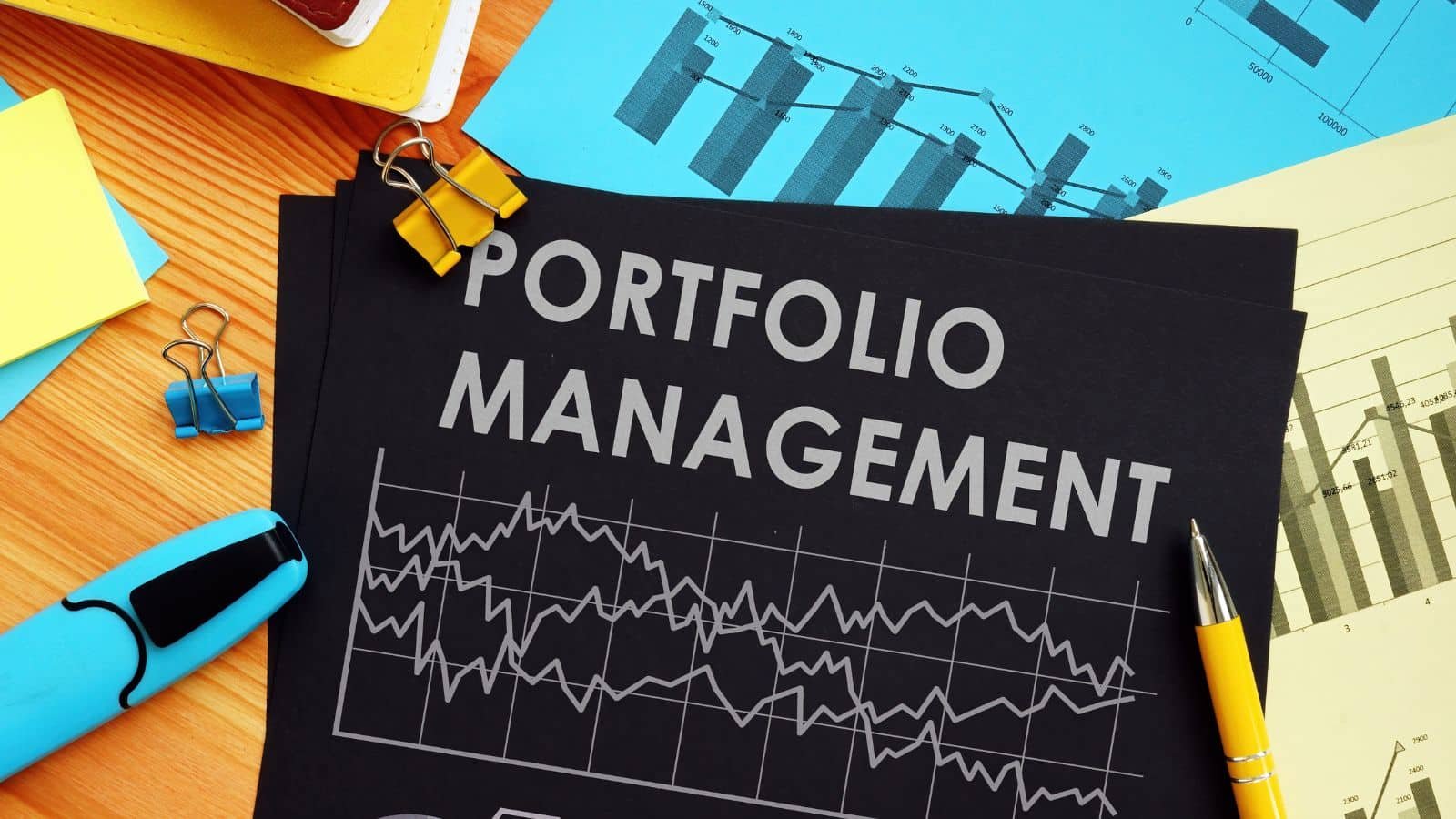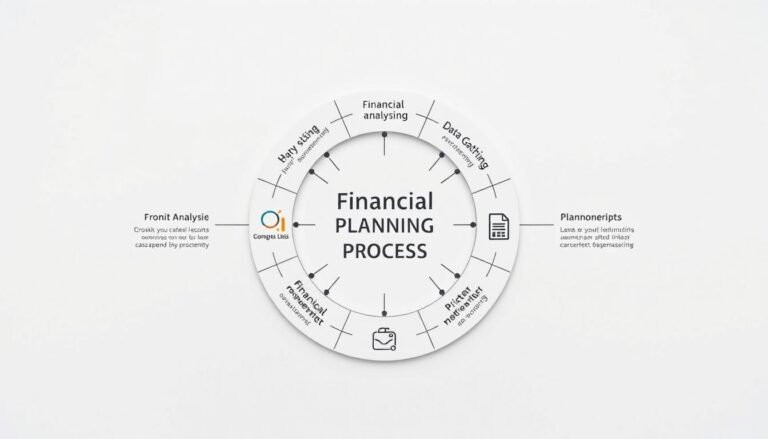Passive index fund investing for low-cost, hands-off portfolio management
Passive index fund investing is a great way to manage your investments with less work and lower costs. It involves putting your money in funds that mimic a market’s overall performance. This way, you can get results similar to the market without constantly keeping an eye on your investments.
Key Takeaways:
- Passive index fund investing offers a low-cost and low-maintenance approach to portfolio management.
- Investing in index funds allows investors to achieve returns that closely track the overall market.
- This strategy is ideal for those who prefer a hands-off investment approach.
- By investing in index funds, investors can avoid the need for daily portfolio management.
- Hands-off investing provides an opportunity for long-term wealth accumulation with reduced effort.
Benefits of Hands-Off Investing
Hands-off investing has many pluses for those looking to invest. It’s great for anyone wanting a less hands-on approach. Investors can reach their financial aims with little work and time, making it perfect for beginners.
One big benefit is needing to check investments less often. This method doesn’t worry about short market changes. Instead, it focuses on long-term growth. This way, investors make calmer choices and skip the stress of daily checks.
Passive investing is all about spreading your money wisely. By investing in different index funds, you lower the chance of losing big. This smart strategy protects your cash and softens the blow if one area does poorly.
“The beauty of hands-off investing is that it allows investors to ride the waves of market volatility without the need for constant intervention. By taking a long-term perspective, investors can stay true to their investment strategy and avoid knee-jerk reactions to short-term market fluctuations.”
This way of investing is also cheaper. Choosing low-cost index funds means more of your profits stay with you. Over the years, these saved costs can really add up in your favor.
To wrap it up, hands-off investing has many pluses. It needs less time, lowers worry about your money, manages risk and expenses well. By going this route, investors can keep a simple portfolio and still reach long-term financial success.
Options for Hands-Off Investors
Looking to invest but don’t want to be too hands-on? There are many choices for you. Some popular ones include:
- Bonds: Bonds are a top pick for those who want steady returns without high risks. They are seen as a safe way to invest and can bring in money regularly.
- Real Estate Investment Trusts (REITs): REITs let investors join others to invest in real estate without the hassle of managing properties. This way, they spread their money over many properties.
- Real Estate Crowdfunding: For a direct stake in real estate projects, real estate crowdfunding is a good route. It allows you to invest in various properties while professionals take care of the details.
- Equity Crowdfunding: If you like the sound of supporting startups and potentially gaining from their success, equity crowdfunding is worth checking out. It lets you invest in new companies without being directly involved in their day-to-day operations.
Every option features its own level of risk and rewards, letting you pick what fits your investment style. Always do your homework. Look at past performances, the fees you’ll pay, and how well your money is spread out.
Benefits of Real Estate Crowdfunding
“By using real estate crowdfunding, you can invest like the wealthy do, spreading your money over many real estate projects. This helps lower risks and could bring in extra money without a lot of effort.”
– Real Estate Crowdfunding Expert
Real estate crowdfunding is a way to step into real estate without handling the property directly. It poses opportunities for good returns and diversification with a low initial cost. Yet, do your research on the platform and the risks that come with it. Make sure you know who’s handling the projects and how trustworthy they are.
By looking into these alternatives, you can find ways to invest that match your financial objectives and preferred level of engagement. Always wise to talk with a financial advisor. They can steer you right based on your unique situation.
Selecting the Right Index Fund
Choosing the right index fund is key for a good portfolio when you’re into passive investing. There are some important factors to think about. These help you make a smart choice.
1. Representative Index
Seek out an index fund that mirrors a representative index. This index should give a good overview of the market or the specific area you want. By following such an index, your money moves with the market’s big hits and changes.
2. Diversified Portfolio
It’s wise not to put everything in one place. Choose an index fund with a diversified portfolio. It should have a mix of stocks, spreading risk. This mix protects your money from being hit hard by any single stock’s ups and downs.
3. Transparent and Defined Index
Go for funds that are clear about what they follow, like a transparent and clearly defined index. This makes it easier to see the fund’s stocks or bonds. Knowing what you’re invested in is important for making smart choices and checking how the fund is doing.
4. Low Turnover
Next, think about how much a fund trades. A fund with low turnover cuts down on trading costs. This means fewer fees and more profit for you. Lots of trading can lead to more fees and taxes, reducing your gains.
5. Sensible Economic Rationale
Lastly, look at the sensible economic rationale behind a fund’s investments. Check if their plans match yours. Understanding their long-term strategy shows if they can grow your investment over time.
Considering these points helps in picking the right index fund for your goals. Remember, research and thinking it through are vital for success in passive investing.
Actively Managed vs. Passive Investing
Investing has two main strategies: actively managed and passive. Active management means trying to do better than the market by actively trading. Passive investing, on the other hand, aims to match the market’s returns by holding index funds or ETFs.
Actively managed funds believe they can beat the market by picking the right investments and trading frequently. But studies show that many of these funds don’t do better than the market in the long run. This can lead to high fees with lower returns.
Market efficiency, the idea that it’s hard to consistently do better than the market, is key in passive investing. It suggests instead of trying to beat the market, investors should aim to match it by holding a mix of index funds. This choice means lower fees and fewer tax implications.
Passive investing is great for long-term investors who believe in market efficiency. It’s about maintaining a diverse portfolio with low costs. This strategy offers a way to reach financial goals without constantly watching the market.
“Passive investing doesn’t require investors to predict the market; instead, it allows them to participate in the market’s overall growth.”
Market Efficiency and the Benefits of Passive Investing
The idea of market efficiency is at the heart of passive investing. It argues that markets quickly adjust to all new information, making it hard to beat the market. So, trying to do so through active management is a tough challenge.
Passive investing allows for diversification, spreading risk across many sectors and asset types. This can reduce the loss potential linked to investing in just a few areas. Also, with generally lower fees, it can lead to better net returns.
The table below highlights the key differences between actively managed and passive investing:
| Active investing | Passive investing |
|---|---|
| Attempts to outperform the market | Seeks to match the market’s performance |
| Involves frequent buying and selling | Focuses on long-term buy-and-hold strategy |
| Higher fees due to active management | Lower fees and expenses |
| Higher risk due to concentrated positions | Risk is spread across a diversified portfolio |
Choosing between active and passive investing means considering your goals and how much risk you’re comfortable with. Active investing might promise higher returns but comes with more costs and risks. Passive investing is a lower-cost approach aiming to grow with the market.
In the next section, we will explore the cost advantage of passive investing and how it can impact your investment performance over time.
The Cost Advantage of Passive Investing
Passive investing is cheaper than actively managed funds. Because index funds and passive ETFs have lower expense ratios. This is due to their aim to mimic market indexes closely. So, passive investing keeps costs down, which could mean more money over time.
Active funds cost more because they need funds for research, analysis, and trading. This means investors pay higher fees.
Even a small change in fees over time can hugely affect your returns. Lower costs can make a big difference. Passive investors keep more of their money this way.
Passive investing’s cost benefit is great for long-term wealth plans. By cutting fees, investors can grow their wealth more over the years. This is critical for effective retirement saving.
Lowering costs is important for maximum profit and meeting financial goals. Saving on fees lets investors use more money for compounding and future growth.
Comparison: Expense Ratios for Index Funds and Actively Managed Funds
| Investment Type | Average Expense Ratio |
|---|---|
| Index Funds | 0.10% – 0.30% |
| Actively Managed Funds | 0.70% – 2.00% |
Passive investing allows investors to benefit from lower expense ratios, allowing them to keep more of their returns and potentially achieve better long-term performance. By focusing on low-cost investing, individuals can build a solid foundation for their financial future.
The Stress-Free Approach of Passive Investing
Passive investing is a calm way to manage your portfolio. It focuses on the long-term and overlooks day-to-day market changes. This lets investors feel more stable and at ease with their money.
Active investing needs a lot of decisions because of short-term markets. This often makes investors anxious and more likely to make bad choices that lead to losses. Passive investing is a way out of this stress.
It believes markets work well and a mix of global investments with low fees is key. This means putting money in funds that copy market indexes, like the S&P 500.
Passive investors trust that the market will grow over time. They avoid stress by not trying to predict or quickly react to market changes. Instead, they think about the market’s overall progress.
“Passive investing is about not constantly watching and making choices. Investors can relax, knowing their funds are spread out and match the whole market,” explains John Smith, from XYZ Investments.
This way, investors can focus on their life goals instead of always watching the stock market. Passive investing lets them use their time on what matters, with their money growing quietly.
It’s also hands-off. After choosing their starting investments, people don’t need to check on it often. This strategy is less work and leaves more time for other things.
Choosing passive investing allows reaching long-term financial dreams in a peaceful manner. It’s about believing in the market’s efficiency. This helps investors worry less and enjoy what’s really important in life.

Conclusion
In conclusion, passive index fund investing is perfect for those who want an easy and affordable way to manage their money. It lets them follow the market’s ups and downs without needing to put in a lot of work.
This type of investing has lots of good points. It helps spread out your money among many companies, lowering the risk. Unlike picking single stocks, it’s safer because your success isn’t tied to just one business.
Also, passive investing costs less than the more active alternatives. You spend less on fees because you’re not paying someone to pick individual stocks for you.
Moreover, with this approach, you can relax. You don’t have to watch the market all the time. By choosing the right funds and focusing on the long term, you’re set.
To wrap it up, passive index funds are a straightforward and smart choice for anyone who values ease, saving money, and growing wealth over time. With this method, you’re going with the flow of the market, making things easier for yourself. In the end, it’s a solid path to reaching your financial dreams.







